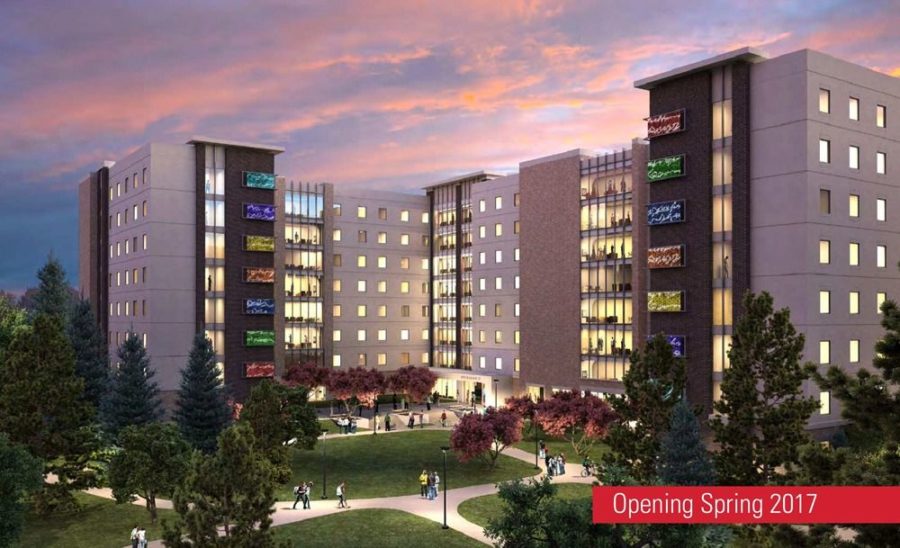New residence hall to help with housing demand
March 31, 2015
As freshman class sizes continue to increase, the need for residence hall beds is rising as well. In 2005, 7,900 ISU students lived in residence halls. By the fall of 2014, the residence hall population increased to 12,237 students.
The Department of Residence, university officials and the Inter-Residence Hall Association have come together to propose a solution to the overcrowding — a new traditional residence hall. The new hall, which has yet to be named, will be positioned adjacent to Buchanan Hall.
“The culture inside the residence halls is something students want to be a part of,” said Cole Staudt, vice president of IRHA and junior in public relations and political science. “That’s why we use the dens, we want as many people to be a part of our community as possible.”
Staudt worked with DOR director Pete Englin and the IRHA to compile a list of what they would like to see in a new residence hall. The list consisted of preferences regarding bathrooms, showers, dens and the style of dorm. The ideas were eventually presented to university officials. The proposal was taken to the Board of Regents and approved in December 2014.
The DOR chose three companies — Ryan Company, The Weitz Company and The Opus Group — to present a design and building plan that wouldn’t start until after spring semester. The bidders were given a budget of $40 million. The Opus Group, which was ultimately selected to construct the residence hall, had a design that came in at $39 million. This allows the DOR to make changes as need be along the way while staying within its budget.
“We can’t have construction go above $40 million,” Englin said. “We’re going to stay at $40 million or lower.”
Englin said the total project budget of $49.85 million will be used to purchase furniture and pay architect fees. The Opus Group will have access to the site on May 11, but no digging will begin until early July.
The DOR and The Opus Group have worked to establish noise guidelines during the times when Dead Week and Finals Week might conflict with the construction period.
“We really work hard with the construction firm, the design firm and Opus to create parameters about when they can start [and] when they can end work,” Englin said. “They really have this scheduled out in a pretty thoughtful way for when work can take place.”
Due to the construction, Buchanan Hall will be closed for the next two summers. Englin said this will allow the DOR to do interior work inside the closed dorm, such as replacing flooring and showers. Once construction is complete, 30 parking spaces will have been lost, and parking will only be offered to residents of Buchanan and the new dorm.
Staudt said the residence hall will have a modern feel with a lot of glass, dens and large community spaces. There will be a single large lounge that can be used for events and a smaller lounge with chairs and tables that could potentially be used for studying.
“From a student perspective and a student experience this is going to be a superb residence hall,” Staudt said. “These dens will be really nice [and] people will want to hang out in there, and that’s how you make your friends.”
In October of 2016 the DOR will begin interior work, such as setting up the hall desk, learning the systems of the building and putting in furniture. Students will be able to contract to live in the new residence hall beginning in the fall of 2016 and can move in during spring semester 2017.
Englin said that rates for the new residence hall have been discussed briefly and that they will potentially range from $5,600 to $5,900. Rates for all residence halls are approved and voted on by the IRHA.
“[The DOR] is not here to provide us a place to live, they’re here to help us succeed,” Staudt said. “That’s what this residence hall is designed to do. It’s designed to help students succeed at school, that’s why we’re here. It’s not a place to live, it’s a place to thrive.”

















